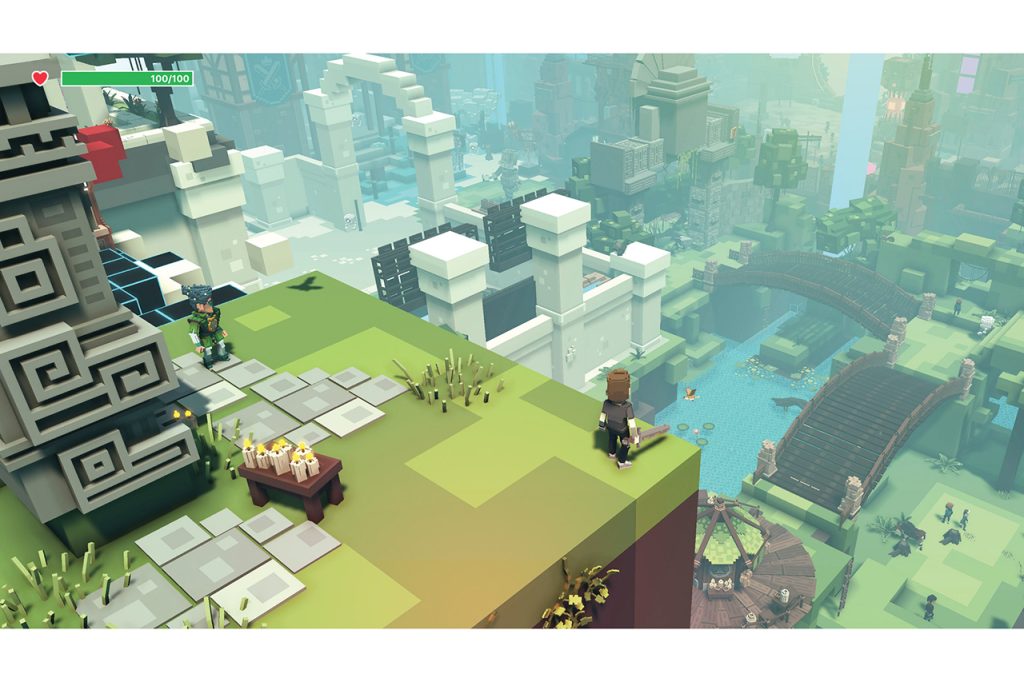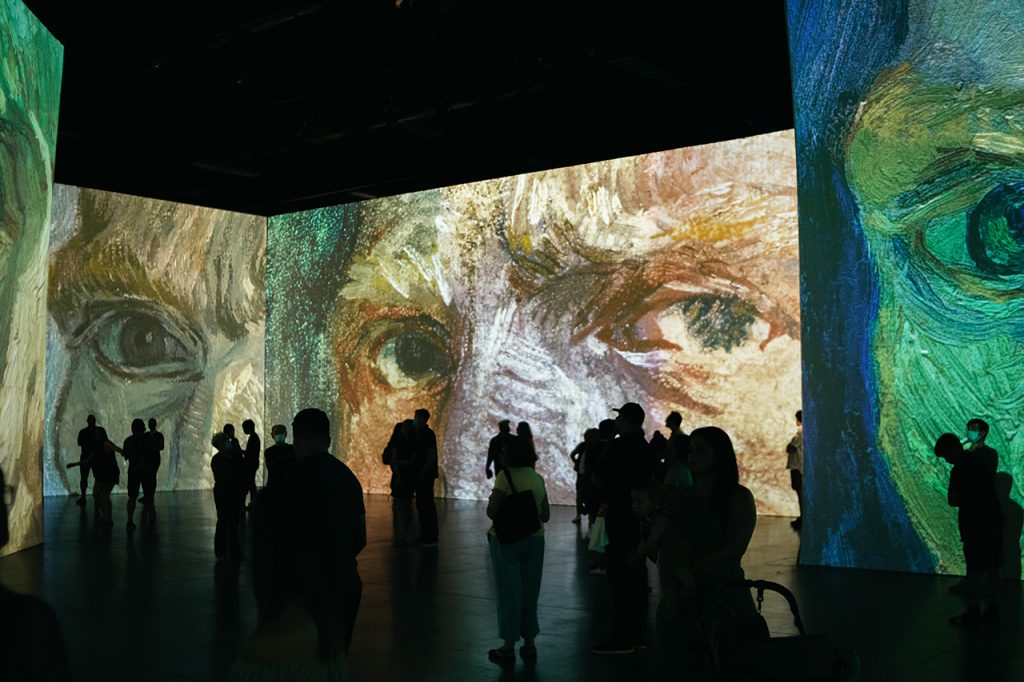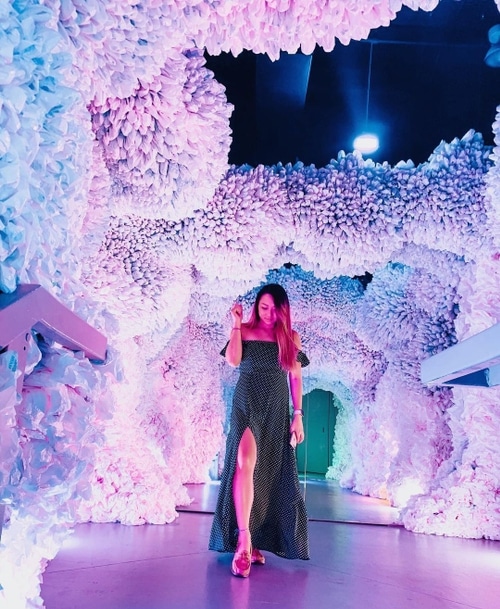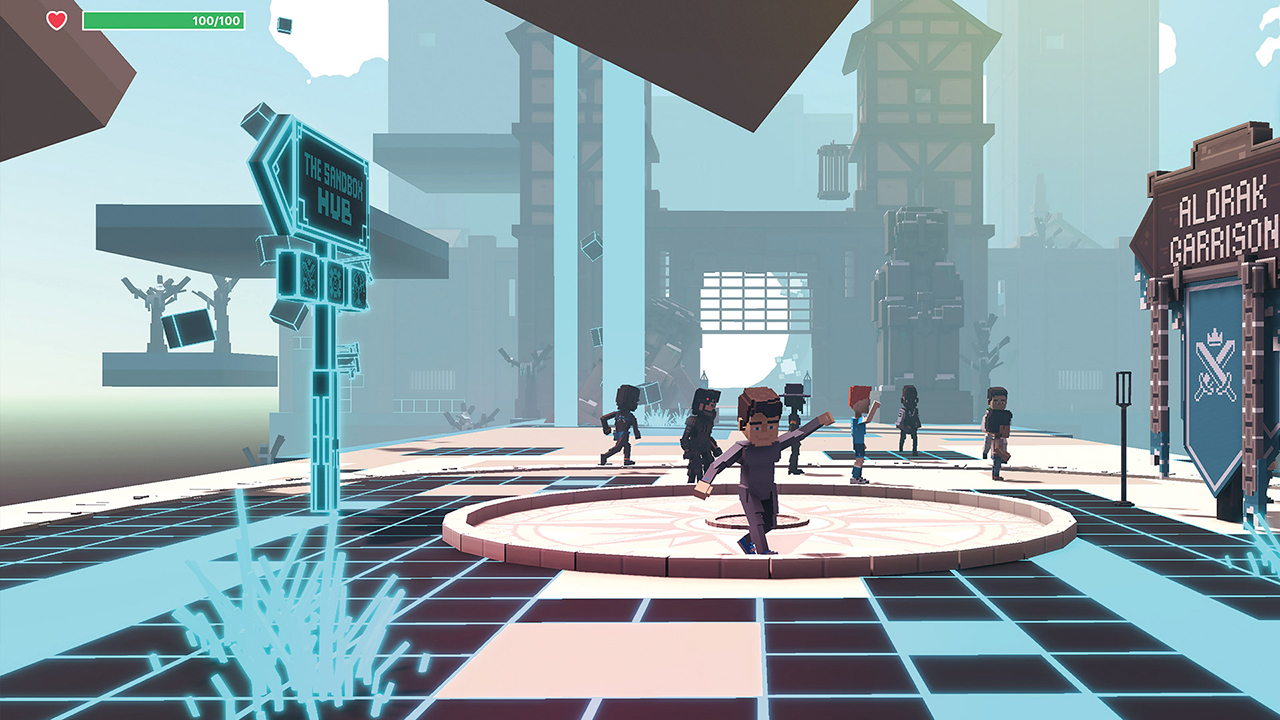At The WXO, we want to connect the dots across the Experience Economy and across the globe – so each week, we’ll be bringing you our round-up of the experiential stories that we think reveal something interesting, relevant or transferrable about the Experience Economy.
Welcome to Experience Radar 13, where we’re taking an accidental trip into the world of Augmented Reality (AR) via an XR theatre production, Niantic’s latest move to transform the Metaverse from dystopia to utopia, and an NFT-enabled AR art gallery in New York City.
1. Immerse Yourself In An XR FLOOD
AR expert Rob Morgan – the man behind Campfire 14: The AR Firestarter – is part of the team behind FLOOD, an immersive XR theatre experience premiering in 2022. Originally written for the stage by Rory Mullarkey, FLOOD has been adapted to XR by Morgan and poet/writer Vanessa Kisuule and is directed by Punchdrunk’s Joel Scott. Described as “a sharply modern and poetic take on the ancient flood myth”, the story is told in real time by a live cast in full body motion capture to an audience wearing VR headsets and against a live violin and electronics performance. Having already seen how VR elevated opera to dizzy new heights and heard about XR technology might be the future of Broadway, we can’t wait for FLOOD to hit.
2. … But Don’t Drown In Digital Dopamine

We’ve likely all heard stories about how our smartphone addictions are getting us hooked on a dopamine overdose. This article from the WSJ delves deeper into the link between mental health and digital addiction, suggesting that “rising rates of depression and anxiety in wealthy countries like the U.S. may be a result of our brains getting hooked on the neurotransmitter associated with pleasure”. A case of too much of a good thing…?
3. The Race To The Real-World Metaverse Is On

In Experience Radar 11 we told you how Fantasy 360 Productions is planning to build the first physical gateway into the Metaverse, and in Experience Radar 12 that Sandbox VR is also “building towards a future where it is the portal to the Metaverse”. Now Niantic – the maker of Pokémon Go – is throwing its hat in the ring with Lightship, a platform for building “real-world metaverse” apps that is “built around the parts necessary to stitch together the digital and the real world,” according to CEO John Hanke. The platform will be free for any developer to access (with some paid features) and Niantic has also shared its $20million investment in new companies building AR apps. For more on Hanke’s nightmare-free vision of a Metaverse that brings us into the real world rather than takes us out of it, check out this interview on Wired.
4. Meet AR That Adapts To Your Environment

As if we needed more evidence that the digital and physical worlds are increasingly becoming one, Niantic has also collaborated with Qualcomm Technologies to announce the Snapdragon Spaces™ XR Developer Platform, a headworn Augmented Reality (AR) developer kit to “enable the creation of immersive experiences that seamlessly blur the lines between our physical and digital realities.” Expected to be available by spring 2022, the open cross-device platform aims to “give developers the tools to create headworn AR experiences that can sense and intelligently interact with the user and adapt to their physical indoor spaces.”
5. Are VR And AR The Future Of LBE?
The VR/AR Association hopes so – and has announced Aaron Pulkka, a former Disney Imagineer and interactive entertainment design and production leader with over 25 years’ experience in emerging tech, as the Co-Chair of its Location-Based Entertainment (LBE/LBVR) Industry Committee. According to Pulkka, these technologies are key to the pandemic bounceback:
“The out-of-home entertainment industry is in the process of bouncing back stronger than ever, after shutting down due to the Covid-19 pandemic. While consumer expectations have increased, so has the demand for transformative social experiences.”
Aaron Pulkka, Co-Chair, LBE/LBVR Industry Committee
6. Artainment, Authenticity, And Why Creativity Beats Technology

Meanwhile Arnold van der Water, the producer of the Meet Vincent Van Gogh immersive exhibit and a partner at Factorr, thinks the future of LBE is about story, not technology. In this piece on the evolution of LBE, he says:
“I am a big proponent of technology; however, it will never replace a good story.”
Arnold van der Water, experience producer
Van der Water also covers retailtainment, artainment, the boom of experiences and the importance of cross-sector collaboration – a topic close to our hearts and as discussed in Campfire 23: How To Bring Different Worlds Together.
7. AR Turns Times Square Into An Invisible Art Gallery
Story might be crucial to all experiences – if you don’t believe us, check out Campfires 27-29 for more on the subject – but when technology is done well, it can help elevate the story you’re trying to tell. We like the use of AR at Crypto Art Fair, an art activation hosted in conjunction with NFT.NYC, the world’s largest Non‑Fungible Token conference, which transformed New York City’s Times Square into a giant gallery for street art – viewable only through a cellphone screen. The project took the work of 20 local artists and turned it into three-dimensional, AR-enabled NFTs, which were available for NFT.NYC attendees and the general public to view, interact with, and even purchase.
8. Take An Immersive AR Journey Through Planet Earth

In Campfire 37: The Hierarachy of Experiences, conversation turned to what might come next after transformation – with Aga Szóstek suggesting that once we’ve been personally transformed, we might start to look to transforming our planet for the better (stay tuned for more of her thoughts on the subject, coming in a brilliant op-ed soon).
Arcadia Earth, an environmental storytelling platform based in New York City and soon to open in Las Vegas, aims to do just this – using a “multisensorial journey through underwater worlds, fantasy lands, and inspirational art installations to reimagine the way we address the most pressing environmental issues of our time.”
Visitors download the Arcadia Earth AR app to get access to AR components of the event, as well as additional information, action resources, and eco-purchase opportunities. Each exhibition is brought to life through immersive technology, animated by AR, VR, projection mapping and interactive environments, where visitors learn how small lifestyle changes will impact the future of our planet. The result is the first-ever, large-scale, immersive experience dedicated to sustainability and taking action for the Earth.





